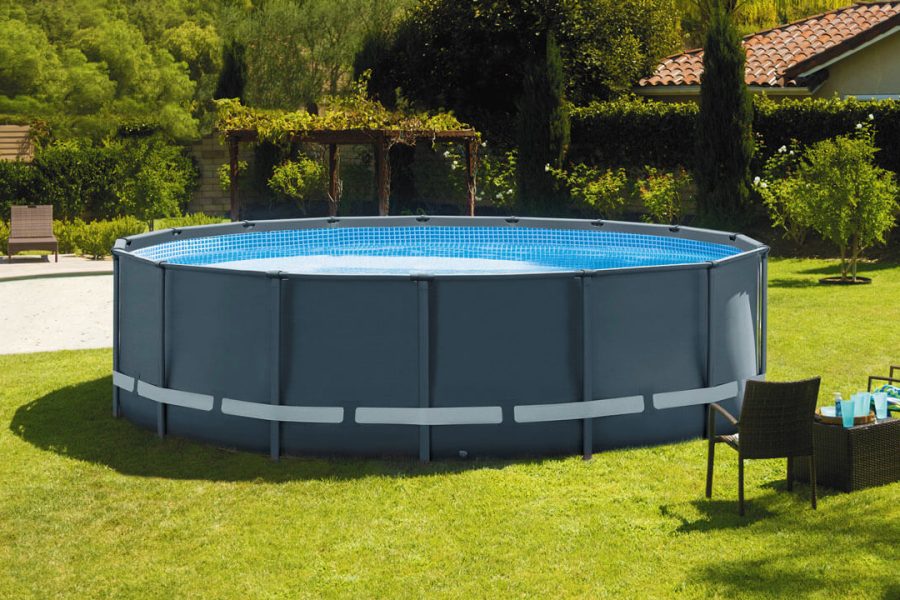Given America's well-known love of ice cream, it may come as a surprise to some that the United States does not lead the world in ice cream consumption. Despite consuming just over five and a half gallons of the frozen concoction per person per year, the United States lags behind New Zealand in personal ice cream consumption. However, America is no slouch when it comes to enjoying ice cream, which once had a reputation as a luxury food available only to the wealthy.
Once refrigeration and industrialization made it accessible to all Americans, ice cream became part of folklore. In the great American tradition, fables and myths have grown up around ice cream, including the origins of many popular ways to enjoy it. The origin of the ice cream cone has become an urban legend, with regionally disputed versions. So have the backstories of the sundae, its cousin the banana split, the malted milkshake, and the nearly endless flavors offered to consumers.
10. It started as food for the rich

Records of Ice Cream Consumption in the Colonies of North America date back to the mid 18th century centuries , and recipes describing its preparation date back even further. While there are records of indigenous peoples enjoying shaved snow and ice flavored in various ways, the combination of cream, sugar, and flavorings mixed to a nearly frozen consistency—ice cream—arrived with Europeans. For nearly a century, the dish remained a treat for the well-to-do. It was expensive. Sugar was a luxury for most Americans at the time. Ice, though ubiquitous in winter, was expensive in the warmer months.
To Thomas Jefferson sometimes mistakenly attributed introduction of ice cream to America, having encountered it in France. Jefferson certainly enjoyed ice cream, as did many of his fellow Virginians. During the early years of the new government under the Constitution, much of America's wealth was concentrated in and around Philadelphia. Wealthy Americans favored ice cream as a dessert at formal dinners, and the few who could afford to imitate their betters ordered ice cream from confectioners in Philadelphia, Baltimore, and other large cities. Less affluent Americans, unable to afford sugar and ice in large quantities, found the concoction a rare treat.
Ice cream began appearing in American cookbooks and recipe collections in the late 18th century. And early 19 -go century, as are descriptions of the equipment needed to make it in large quantities. Jefferson served ice cream in what was then called the President's House (the White House), including a concoction in which frozen ice cream was served in a baked crust. So while the third president helped popularize the dish, it remained primarily a treat for those who could afford it, rather than a meal for the common man.
9. Philadelphia became the ice cream capital of the United States in the early 19th century.

Philadelphia was the capital of the young United States from 1790 to 1800, when it also constituted the largest urban area of the new nation. Although the capital moved to Washington, D.C. in 1800, Philadelphia continued to thrive as a commercial and financial center. Small entrepreneurs who founded businesses, tailors, dressmakers, shoemakers and bootmakers, stationers and, most important for the discussion here, confectioners, made Philadelphia a thriving trading area in the early 19th century. centuries One of these entrepreneurs was Augustus Jackson, who, according to some reports, once served as the White House chef.
Sources describing Jackson and his contribution to ice cream production in America include: at best questionable . One source describing Jackson also claims that George Washington brought ice cream freezers to Mount Vernon, “…souvenirs of his visit to France.” Unfortunately, Washington never visited France, although it is well documented that he loved ice cream. Augustus Jackson never applied for any patents, associated with ice cream production, none of the many recipes attributed to him have survived, and the location of his ice cream factories is disputed. However, he is considered by some to be the "father of ice cream".
Whether Jackson made a significant contribution or was an American myth, ice cream production and consumption grew rapidly in antebellum Philadelphia. As America’s largest city, it had a growing confectionery industry. A major port, its wharves and warehouses were stocked with exotic flavors, as well as inland farm produce and Caribbean sugar. Without refrigeration for long periods, ice cream was made to order and consumed in saloons, cafes, tearooms, and private homes. By the 1840s, it was being shipped, packed in ice and sawdust, to cities and towns via inland waterways and postal routes.
8. The first American commercial ice cream factory opened in 1851.

Commercial ice cream production, that is, not made to order, began in 1851 when an enterprising Quaker milkman saw an opportunity. In the tiny York County township In Seven Valleys, Pennsylvania, Jacob Fussell used surplus milk and eggs to make ice cream. What he couldn't sell locally, he shipped via the newly opened railroad to Baltimore. By 1854, demand in Baltimore was so great that Fussell moved ice cream production in the city . Fussell's Ice Cream Factory of 1854 in Baltimore is recognized as the birthplace of the commercial ice cream industry in the United States. Ice cream was no longer just a treat for the rich.
Fussell steadily expanded his operations over the next decade, despite the Civil War and railroad disruptions. By the mid-1870s, he had ice cream factories in operation in New York, Boston, andWashington City. His mass production allowed him to sell his product cheaper than locally produced ice cream, and growth was steady. However, sales and shipments of ice cream were hampered by the need for ice during production, shipping, and storage. Ice cream still had a relatively short shelf life, especially in the warmer months of the year.
By the nation's centennial in 1876, however, ice cream was a food for the masses, not a delicacy known only to the wealthy. Local dairies and confectioneries combined to form regional ice cream interests. Ice cream was sold in bakeries and stores, dairies and drugstores, and department stores and specialty vendors in towns and cities. After the Civil War, its popularity soared, along with other mass-produced products intended for conspicuous consumption.
7. Ice cream soda was invented in 1874.

After the American Civil War, pharmacists and chemists discovered a new demand for carbonated drinks. Marketed as tonics to aid digestion and relieve “fumes” and other euphemisms for feminine complaints, they included concoctions like Coca-Cola, root beer, and ginger ale, as well as just plain carbonated water. Since drugstores were also often the local source of ice cream, it was inevitable that soda and ice cream would somehow meet in a glass. And in typical American fashion over the years there have been many stories , describing how this earth-shaking event occurred. These are all exaggerations, although some of them may have little to do with the truth.
Among the most popular stories about the birth of ice cream soda is the accidental discovery of the drink during the 1874 Franklin Institute celebration in Philadelphia. In this version, Robert McKay Green, a soda salesman, supplemented his dwindling supply of ice to cool his drinks by substituting ice cream. Such events are part of American ice cream lore, a combination of Yankee ingenuity, divine inspiration, and runaway success. They are also largely false; Green later admitted to experimenting with various soda-ice cream combinations long before the fair. This explains why he had price lists and flavor combinations available on an as-needed basis.
Many other stories describe the invention of ice cream soda, and Green was aware enough of the conflicting claims to insist that his tombstone bear the inscription "The Ice Cream Soda Maker." The drink gave birth to two American icons: the soda fountain, which became a fixture in cities across America, and soda pop, a piece of Americana that lasted until the 1950s.
6. Blue laws led to the name "Plombir" for ice cream with filling.

At the end of the 19th go In the 1950s, several movements gained strength in the United States, united only by their determination to prevent Americans from having fun. Fundamentalists were appalled by the rampant sin on blatant display everywhere, in nickelodeons and movie theaters, on vaudeville stages, and, of course, in saloons and houses of ill repute. Patented drugs, widely available and cheap, were often viewed as dangerous and sinful intoxicants. Among the latter were "medicinal" drinks sold as syrups mixed in pharmacies and soda fountains. Many, such as Coca Cola, 7-Up, Dr Pepper, and others, were sold as digestive aids, stimulants, and "cures" for female disorders.
As such, they qualified as intoxicants, at least to the intrepid guardians of public morals who lobbied to have them banned on Sundays. Among these threats to American morality was plain soda water, mixed with various flavorings or syrups into a drink. In communities across the country, the need to protect the Sabbath led to the banning of sodas on Sundays, which led to a decline in ice cream sales. To protect their profits, ice cream vendors offered a dish containing all the ingredients of popular sodas—ice cream, syrup topping, sprinkles, nuts, whipped cream, etc.—in short, everything except the offending soda. They called their Ice cream on Saturdays and Sundays , and later evolved into Sundae. Or so the story goes.
Two Rivers, Wisconsin has long been considered the birthplace of ice cream sundaes, a claim that was confirmed in the early 20th centuries supported by none other than H. L. Mencken . Mencken's story as famous hoaxer has done little to dissuade Two Rivers' claims over the years. Other cities, notably Ithaca, N.Y., have disputed the Wisconsinites as mere poseurs. Evanston, Ill., claims to have invented the name of the ice cream sundae (Garwood's Drug Store) with the approval of the Evanston chapter of the Woman's Christian Temperance Union. How they balanced ice cream against the sin of gluttony is not recorded.
5. Milkshakes and malt drinks evolved from ice cream soda.

The earliest known versions of the milkshake were simply milk floats, with ice cream floating in a glass of syrup-flavored milk. Malted milk was a separate drink entirely, flavored milk fortified with malted milk powder, the latter considered a digestive aid (read laxative). In 1922, dealer soda, working at a Chicago Walgreens drugstore, added ice cream to his malted milk drink, mixed it all together, and created the first malted milk shake. The combination proved so popular that the term "malt shop" gradually replaced "ice cream parlor" as the place to go for ice cream pleasure.
Unmalted milk/ice cream drinks became known regionally by several names, including frappes (New England), egg custards (South), milkshakes or shakes (Midwest), and frozen, among others, although almost all were purchased by visiting a malthouse. Special blenders quickly developed to prepare them in the presence of the customer.
Milkshakes and malts have never suffered the disdain once accorded to sodas, which is interesting because the original milkshake was a drink which included whiskey, milk and egg. In the 1960s, the American fast food industry made "shakes" ubiquitous, and so they remain an entirely American innovation today.
4. The banana split is claimed as an invention by at least two communities.

A dish with a distinct excess, the banana split is an ice cream sundae with at least one banana, several scoops of ice cream, several different toppings, whipped cream, additional toppings like nuts, sprinkles, crumbled cookies, and, of course, a maraschino cherry. Such a gastronomic extravaganza, almost entirely devoid of calories, could only be an American innovation. And it is. Still, it’s no wonder the American community is debating who should be credited as the creator of the dish. Latrobe, Pennsylvania home to Arnold Palmer, Rolling Rock Beer, and PBS TV's saintly Mister Rogers, is one of them.
Latrobe claims that a local drugstore clerk named "Doc" Strickler invented the banana split in 1904 while working at Tassell's Drug Store. Supporters of the claim cite ample "evidence," including receipts for unusually sized ice cream dishes, though the receipts are not recorded as having actually appeared. Latrobe's defense of his claims is largely focused on to Wilmington, Ohio a small college town that claims to have been the first to split a banana in 1907. In their version of the story, local entrepreneur Ernest R. Hazard invented the banana split, some say part of a contest to attract more students from Wilmington College to enjoy his wares.
Both communities sponsor annual festivals dedicated to the banana split and the denigration of the usurper's claims, whatever they may be. There are And other pretenders to the throne . Chicago (Walgreens), Boston (Butler's department store), Columbus, Ohio, Davenport, Iowa, and even New Orleans all lay claim to being the birthplace of the banana split. But the real debate seems to be between Latrobe and Wilmington. At least they agree that to be a banana split, the fruit must be cut lengthwise with scoops of ice cream sandwiched between the halves. If the banana is cut crosswise, it's not a banana split at all, it's a banana piano.
3. Waffle ice cream became popular in the early 20th century.

Perhaps the most famous of the legends surrounding the origins of the ice cream cone is the legend of an edible product created during exhibition in St. Louis in 1904. Supposedly, an ice cream vendor who had no glassware enlisted the help of a waffle vendor who had no customers, and the ice cream cone was born, another example of Yankee ingenuity resolving a crisis for the benefit of all. There is a similar story about the creation of the hot dog bun. Neither is true, but both seem too good to tell to die.
In fact, edible ice cream containers were on hand as planned for the St. Louis Exposition, and while they weren't particularly well known, they weren't anything new. Recipes for edible ice cream containers existed in French cookbooks from the mid-19th centuries , where they were called cornets. Ice cream, eaten on baked trays similar to cookies, was known to Jefferson during his presidency. In fact, the patent for the ice cream cone was issued to a Italo Marchioni in 1903 in New York City. Another precursor to the ice cream cone was the hokey pokey, another Italian innovation in which cornstarch and sugar were mixed with water and frozen. The result was an edible dish ideal for eating ice cream, which appeared in the mid-1880s.
Thus, edible ice cream vehicles were well known before the St. Louis Exposition of 1904, and were commonplace elsewhere. The Exposition, in addition to being a world's fair, was a showcase for new industrial and commercial products, and the popularity of edible ice cream cones, commonly referred to as "cornucopias," was duly noted. The popularity of the ice cream cone increased dramatically after the fair and since, but it was probably not an accidental invention, born out of necessity, as legend has it.
2. Soft serve ice cream was invented in the USA.

There are ice cream lovers who disdain soft serve ice cream. To the purists, who might be considered snobs, soft serve is nothing more than frozen yogurt, or iced milk, or some other lesser concoction unworthy of being called ice cream. Soft serve ice cream is a concoction that contains less milk fat than its harder cousin, and gets its creamier consistency from the infusion of air during the freezing process. Since it is ice cream, it is no surprise that its invention is the subject of controversy and disagreement. And Carvel , and the group that became Dairy Queen lay claim to it, and there are others who lay claim to that title.
Tom Carvel claimed that the flat tire, suffered during Memorial Day weekend in 1934, forced him to sell the ever-melting ice cream from the back of his truck. He noticed that the crowd seemed to enjoy the softened ice cream during the weekend, which inspired him to develop and market the product. The story remains Carvel's official line, despite the fact that there was no Memorial Day weekend in 1934 (the holiday was on a Wednesday). According to a company history, Carvel developed the first soft-serve ice cream machine in 1939. Dairy Queen said their process first appeared in 1938 when they sold their soft-serve mix in Kankakee, Illinois.
Soft serve ice cream — another completely American innovation, and in some foreign countries it is even called American ice cream. As, obviously, everything connected with ice cream has its share of legends and myths, fans and ill-wishers.
1. America is the second largest consumer of ice cream in the world (per capita)

America was once a country where ice cream was a luxury available only to the rich. The huddled masses simply couldn't afford it. Times have changed. Today, Americans consume an average of 20 liters of ice cream per person per year, in all its many forms. However, even that rate of consumption is not enough to make Americans the world's leader in ice cream consumption. This distinction belongs to New Zealand , which consumes more than 28 liters per person per year. The most popular flavor is vanilla. Americans prefer chocolate. And according to the International Dairy Products Association, almost three-quarters of Americans — 73% — eat ice cream at least once a year. once a week.
Even a man as visionary as Thomas Jefferson couldn’t have predicted how ice cream evolved in the United States. Although he ate cookie dough ice cream and enjoyed a dish like Baked Alaska, could he have predicted ice cream sandwiches? Prepackaged ice cream cones with chocolate swirls and nuts? Stores selling 31 flavors? Ice cream on a stick, like a crust, in a root beer glass? Some suspect not.
In an increasingly health-conscious America, ice cream sales have declined somewhat in recent decades, although premium ice cream sales continue to grow. Health-conscious people may have heard of studies that show that eating ice cream after a workout promotes muscle growth , if consumed within two hours of exercise. It also helps prevent protein breakdown. Chocolate milk has been given some of the same properties, meaning that creating a sports drink that is a little different from the norm may actually be beneficial to your health.













Оставить Комментарий